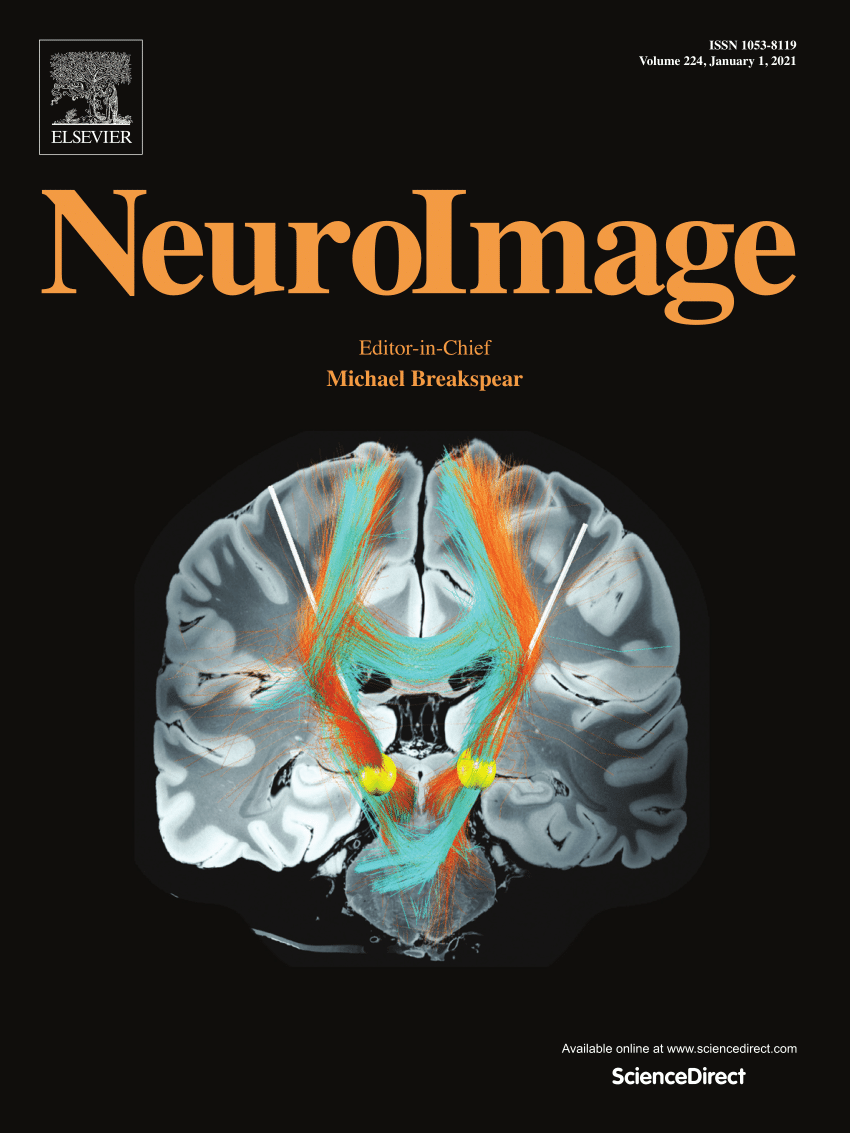IF 4.7
2区 医学
Q1 NEUROIMAGING
引用次数: 0
摘要
本研究探讨了弥散峰度成像(DKI)检测视觉运动训练引起的微观结构变化的潜力及其与弥散张量成像(DTI)相比的附加值。14名健康参与者完成了为期六周的家庭眼球运动训练干预。对训练前后的 DKI 扫描结果进行了分析。结果显示,任务相关区域,尤其是楔骨区域的峰度(MK、RK、AK)和弥散度(MD)显著降低,DKI 和 DTI 衍生测量结果之间存在重叠。相比之下,心尖周区域仅显示出 MK 和 AK 的降低,这表明峰度指标在该区域更为敏感。训练后 KA 和 FA 的增加并不显著。BA分析证实了视觉目标区域与训练相关的系统性变化,而作为对照的颞横回则保持稳定,这为这些效应的特异性提供了证据。在这些指标中,AK 是一个稳定、敏感的标记,而 MK 和 RK 则提供了更多的洞察力,但变异性更大。这项研究强调了楔状肌在视觉运动适应中的作用,以及 DKI 在测量认知训练和神经康复微结构变化方面的潜力。本文章由计算机程序翻译,如有差异,请以英文原文为准。
Tracking microstructural adaptations in primary visual areas: A diffusion kurtosis imaging study on visuomotor learning
This study investigates the potential of Diffusion Kurtosis Imaging (DKI) to detect microstructural changes induced by visuomotor training and its added value over Diffusion Tensor Imaging (DTI).
Fourteen healthy participants completed a six-week home-based eye movement training intervention. Pre-and post-training DKI scans were analysed. Descriptive analysis, including the Coefficient of Variation (CV) and Bland-Altman (BA) metrics, was used to assess training effects.
Results revealed significant reductions in kurtosis (MK, RK, AK) and diffusivity (MD) in task-relevant areas, particularly the cuneus, with overlapping findings between DKI and DTI-derived measures. In contrast, the pericalcarine area showed reductions only in MK and AK, suggesting that kurtosis metrics were more sensitive in this region. Increases in KA and FA post-training were not significant. BA analysis confirmed systematic training-related changes in the visual target area, while the transverse temporal gyrus, used as a control, remained stable, providing evidence for the specificity of these effects.
These findings highlight DKI's ability to capture training-induced microstructural changes, complementing DTI. Among the metrics, AK emerged as a stable, sensitive marker, while MK and RK provided additional insights with greater variability. This study underscores the role of the cuneus in visuomotor adaptation and the potential of DKI to measure microstructural change cognitive training and neurorehabilitation.
求助全文
通过发布文献求助,成功后即可免费获取论文全文。
去求助
来源期刊

NeuroImage
医学-核医学
CiteScore
11.30
自引率
10.50%
发文量
809
审稿时长
63 days
期刊介绍:
NeuroImage, a Journal of Brain Function provides a vehicle for communicating important advances in acquiring, analyzing, and modelling neuroimaging data and in applying these techniques to the study of structure-function and brain-behavior relationships. Though the emphasis is on the macroscopic level of human brain organization, meso-and microscopic neuroimaging across all species will be considered if informative for understanding the aforementioned relationships.
 求助内容:
求助内容: 应助结果提醒方式:
应助结果提醒方式:


